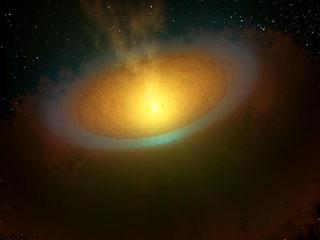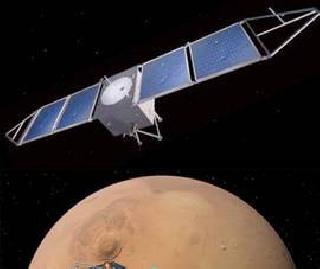
This artist's concept illustrates an icy planet-forming disk around a young star called TW Hydrae, located about 175 light-years away in the Hydra, or Sea Serpent, constellation. Photo: NASA/JPL-Caltech.
PASADENA, CALIFORNIA (BNS): A team of European astronomers, with the help of data from Herschel Space Observatory, have detected for the first time cold water vapor enveloping a dusty disk around a young star.
The findings suggest that this disk, which is poised to develop into a solar system, contains great quantities of water, suggesting that water-covered planets like Earth may be common in the universe, according to a news report by NASA.
"Our observations of this cold vapor indicate enough water exists in the disk to fill thousands of Earth oceans," astronomer Michiel Hogerheijde of Leiden Observatory in The Netherlands, was quoted as saying in the news report.
The star with this waterlogged disk, called TW Hydrae, is 10 million years old and located about 175 light-years away from Earth, in the constellation Hydra.
The frigid, watery haze detected by Hogerheijde and his team is thought to originate from ice-coated grains of dust near the disk's surface.
TW Hydrae is an orange dwarf star, somewhat smaller and cooler than our yellow-white sun.
As the new solar system evolves, icy comets are likely to deposit much of the water they contain on freshly created worlds through impacts, giving rise to oceans, the report added.
Astronomers believe TW Hydrae and its icy disk may be representative of many other young star systems, providing new insights on how planets with abundant water could form throughout the universe.
Herschel is a European Space Agency mission with important NASA contributions.
 Previous Article
Previous Article Next Article
Next Article












The Indian Air Force, in its flight trials evaluation report submitted before the Defence Ministry l..
view articleAn insight into the Medium Multi-Role Combat Aircraft competition...
view articleSky enthusiasts can now spot the International Space Station (ISS) commanded by Indian-American astr..
view article